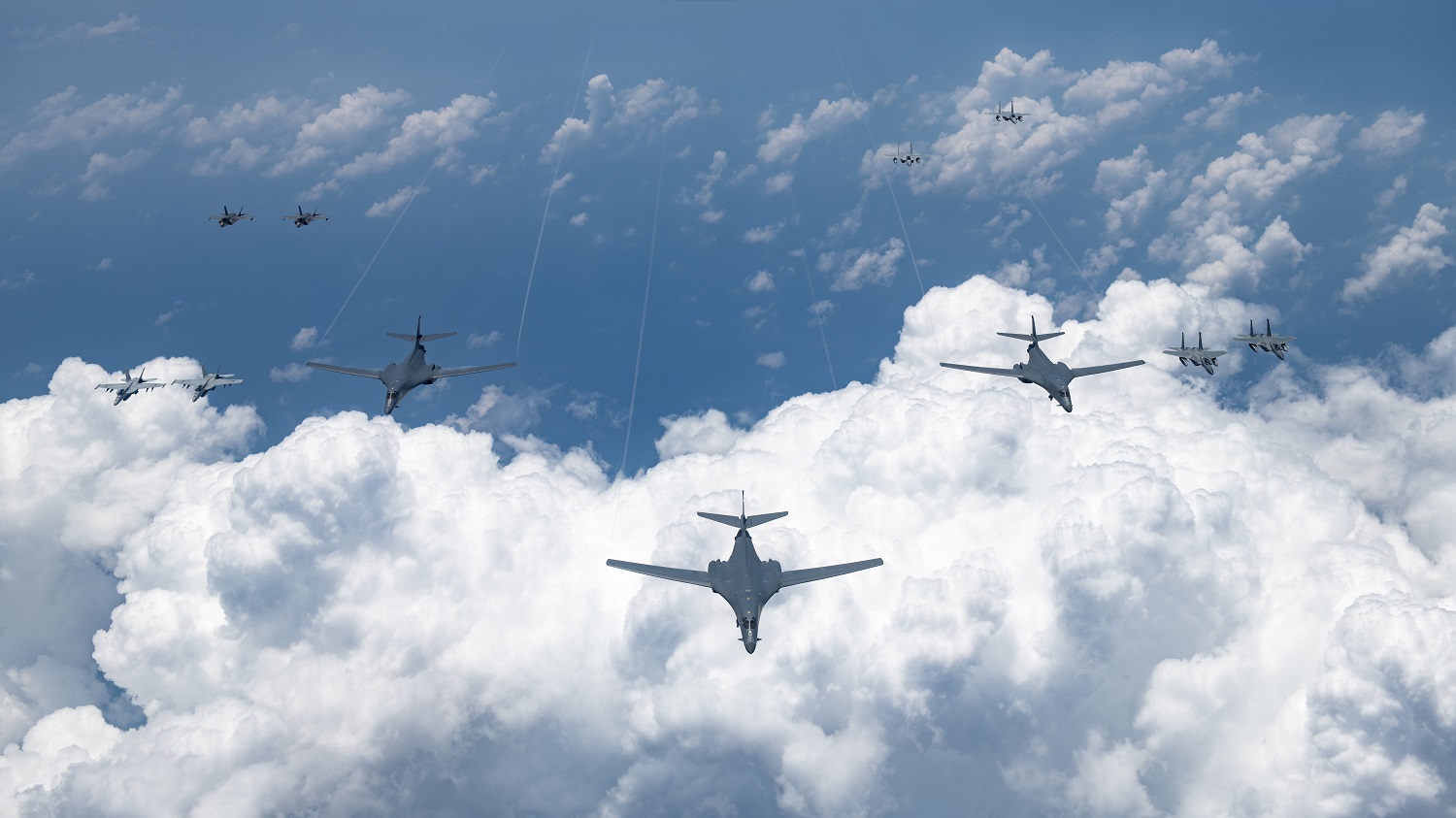Demonstrating airpower, bomber and fighter aircrew assigned and deployed to Pacific Air Forces launched four B-1 Lancers, two B-2 Spirit Stealth Bombers, and four F-15C Eagles and conducted Bomber Task Force missions simultaneously with joint and allied partners within the Indo-Pacific region over the course of 24 hours, August 17. Pacific Air Forces routinely conducts BTF operations to show the United States’ commitment to allies and partners in the Indo-Pacific area of responsibility. The first display of airpower came when two B-1s from Dyess Air Force Base, Texas took off from Dyess and flew to the Sea of Japan.

“Our unique strength as an Air Force is our ability to generate integrated actions with our joint teammates and allies and partners to challenge competitors in a time and place of our choosing,” said Gen. Ken Wilsbach, Pacific Air Forces commander. “These simultaneous airpower missions demonstrated our capacity and readiness to deliver a wide range of proactive, scalable options to quickly deploy our forces to support our mission of ensuring a free and open Indo-Pacific theater.”
“The Koku-Jieitai has participated in bilateral trainings on continuous basis, and I have no doubt that our efforts result in strengthening the Alliance and partnership between Japan and the U.S.,” said JASDF Lt. Gen. Shunji Izutsu, Air Defense Command commander. “Training in a complex situation like this large force employment improves not only tactical skills, but also interoperability and mutual trust.”

While the two BONES were in route to the Sea of Japan another set of two B-1s took off from Andersen Air Force Base, Guam. In addition to the two sets of bomber missions, four F-15C Eagles from Kadena Air Base, Japan, also made their way to the Sea of Japan to integrate with the four B-1s, the U.S. Navy’s USS Ronald Reagan Carrier Strike Group, F-35 Lightening IIs assigned to Marine Corps Air Station Iwakuni, Japan, and F-15J aircraft from the JASDF to conduct large force exercise training. Upon completion of integration and training, the fighters returned to Kadena while the two B-1s returned to their home station in South Dakota and the other two returned to Dyess.

“High end, integrated training with our Air Force peers enhances our capability to respond to any contingency, and meet any challenge,” said U.S. Navy Rear Adm. George Wikoff, Ronald Reagan Carrier Strike Group commander. “U.S. joint integration demonstrates our unwavering commitment to regional defense agreements with our allies and partners.”
“U.S. strategic bomber forces project strength and deter regional threats to our free and open Indo-Pacific. Integrating Marine tactical aircraft allows us to demonstrate the advantages created by our own unique capabilities and support these important assets,” said Lt. Gen. Steven Rudder, commander of U.S. Marine Corps Forces, Pacific. “Our joint aviation team is unmatched in its ability to command and control the missions required in this complex and dynamic global environment. We are committed to our allies and partners across the region.”

Finally, while integration and training were happening in the Sea of Japan, two B-2 Spirit Stealth Bombers from Whiteman Air Force Base, Missouri currently deployed to Naval Support Facility Diego Garcia delivered their own unique capabilities in the theater. Once there, they integrated with the Koku Jieitai, or Japan Air Self-Defense Force (JASDF), and further strengthened relationships by training together. These missions show the ability of U.S. Air Force Global Strike Command to deliver lethal, ready, long-range strike options to Geographic Combatant Commanders anytime, anywhere. In the Indian Ocean, the Spirits conducted joint interoperability tactics training before returning to Diego Garcia.
















